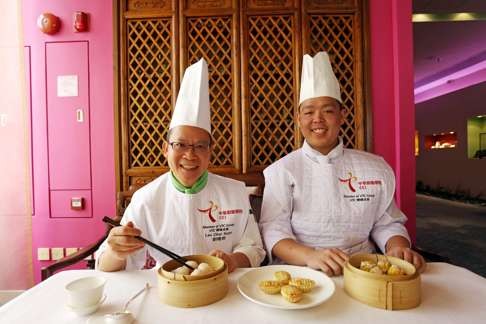Dim sum has bright future in Hong Kong despite decline in chef numbers, say industry insiders
Making dim sum requires years of training and practice, and long and unsocial hours. It’s no surprise the number of specialist chefs has declined, although new restaurants and new ideas are sparking a resurgence of interest in the Cantonese favourite

WATCH Bernice Chan learn how to make dim sum
Fong Li-hing holds a cleaver parallel to the kitchen counter and pushes the blade down on a tiny ball of dough, turning it into a round, almost paper-thin wrapper for har gau, or shrimp dumplings.
He adds the prawn and bamboo shoot filling, folds over the wrapper to form a half circle and, within seconds, deftly pleats the sides together to seal it and give the morsel its characteristic shape.“You need to wrap it nicely because the appearance of the dim sum has to look good and taste good,” says Fong, 40, a dim sum chef at the Spring Moon restaurant in The Peninsula Hong Kong. “That’s why you need to practise wrapping a lot.”

Eating dim sum is a weekly, if not daily, ritual for many Hongkongers, who may have them for breakfast, lunch and, sometimes, even with dinner. But the number of trained cooks preparing the small bites that “touch the heart” has dropped significantly in the last 20 years.
When Fong’s supervisor, dim sum sous chef Lee Po-kin, began his apprenticeship years ago, there were over 30 dim sum chefs in the kitchen.